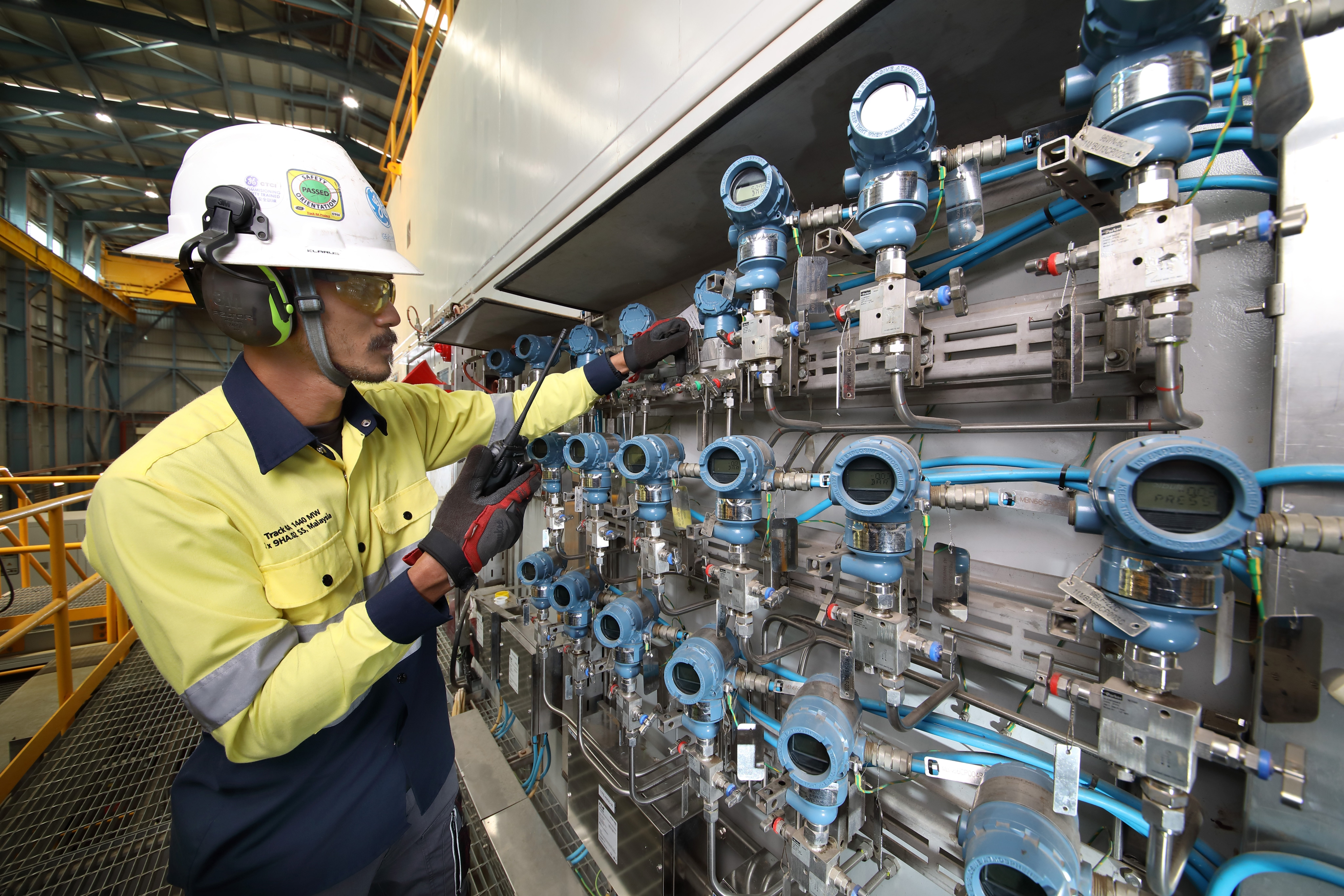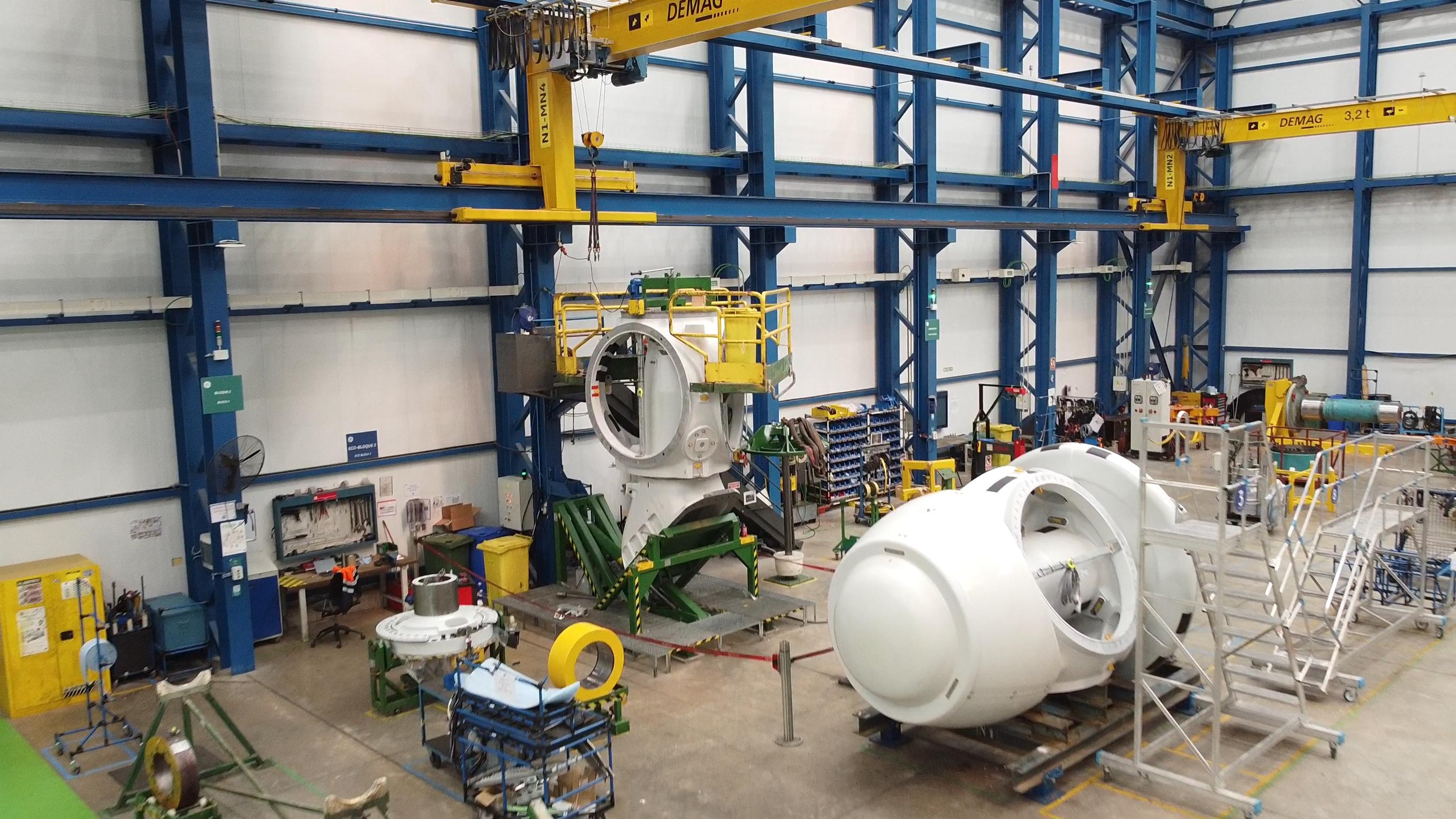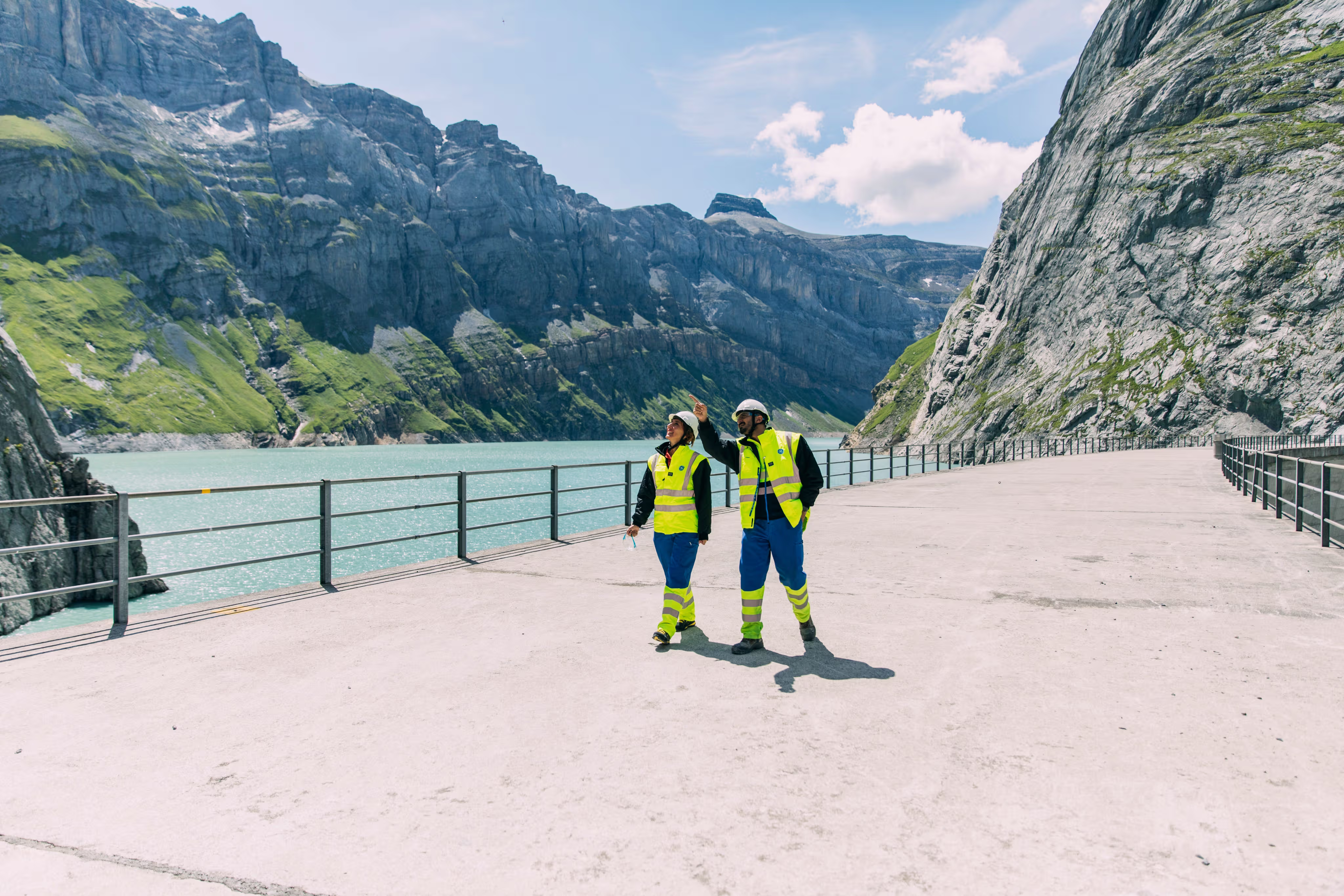CONSERVE
Our commitment to innovate more while using less, safeguarding natural resources.
Leading Goals
Carbon neutrality for Scope 1 and 2 greenhouse gas emissions by 2030
90% of our top products covered by our 4R circularity framework by 2030






INNOVATE MORE WHILE USING LESS, SAFEGUARDING NATURAL RESOURCES
scope 1 & 2 emissions
Working to decrease our Scope 1 and 2 GHG emissions is part of our day-to-day operations and product development, and reflected in our goal to achieve carbon neutrality within our own operations (Scope 1 and 2 GHG emissions) by 2030. Between 2019 and 2023 GE Vernova’s Scope 1 and 2 emissions decreased 39%.
Our Conserve pillar highlights our commitment to improve the impacts of our operations and our products. We're aiming to reduce the Scope 1 and 2 greenhouse gas emissions from our own operations. We are incorporating environmental considerations into how our products are designed, engineered, deployed, serviced, reused, and recycled at the end of their useful life through our Product Stewardship and Circularity program. We believe innovation and conservation can go hand in hand. Beyond our leading goals, we strive to protect biodiversity, conserve water, and manage waste and pollution.
Progress Towards Our Leading Goals and Metrics
Our leading goals and metrics provide focus to our sustainability strategy, helping to focus our efforts where it matters most. Each goal is designed to drive progress across the whole organization and enable more transparent reporting. Find out about the progress we made towards our goals in 2023.
Carbon neutrality for Scope 1 and 2 greenhouse gas emissions by 2030¹
We are committed to carbon neutral operations by 2030. Our 2030 Carbon Neutral Ambition outlines our approach to achieving this goal.
90% of our top products² covered by our 4R circularity framework by 2030
Our circularity approach is centred around our 4R framework, which accounts for the four product life-cycle phases of our products.
Our 4R circularity framework focuses on circularity requirements for the product portfolio based on four key principles: rethink, reduce, reuse, and recycle, which encompass our entire product life cycle. We’re continuously improving our thinking around how we design, manufacture, service, and enable the end of life of our products, and establishing specific circularity requirements and criteria across our business operations. By 2030, we aim to have 90% of our top products (by sales) covered by this framework.

Our 2030 Carbon Neutral Ambition
At GE Vernova, working to decrease our Scope 1 and 2 GHG emissions is part of our day-to-day operations and product development, and reflected in our goal to achieve carbon neutrality within our own operations (Scope 1 and 2 GHG emissions) by 2030.
To achieve this goal, our businesses are implementing energy efficiency efforts, using Lean practices to eliminate energy waste, and reducing emissions from the grid through smart power sourcing. While we are focused on driving absolute reductions to achieve carbon neutrality, where necessary, we expect to in the future balance remaining emissions as appropriate with high-quality carbon offsets or removals. GE Vernova internally tracks progress to established targets versus a 2019 baseline.
2020
In 2020, GE committed to achieving carbon neutrality by 2030 for its operations – GE Vernova will uphold this commitment.
2023
39% reduction in our Scope 1 and 2 (market-based) emissions between 2019 and 2023.
2030
Achieve carbon neutrality in our own operations (Scopes 1 and 2).
Our approach to operational emissions reductions
Applying Lean principles to reduce energy use and improve efficiency
Lower-carbon energy supply
Reducing emissions from SF₆
Decarbonizing our vehicle fleet
Removing carbon
39%
reduction in Scope 1 and 2 (market-based) emissions between 2019 and 2023.
40%
reduction in Grid Solutions net weight SF₆ leaks from 2019 to 2023.
Our path forward
Developing a Scope 1 and 2 enterprise standard and standard operating procedures for our smaller sites and fleet.
Identify and fast-tracking emission reductions across our manufacturing sites.
Grid Solutions is investing in further SF₆ reductions and working with suppliers to improve the performance of SF₆ pipe connectors.
Incorporating companywide Scope 1 and 2 GHG emissions reductions into our executive compensation structure for our Executive Leadership Team.
OUR 4R CIRCULARITY FRAMEWORK
Our 4R circularity framework focuses on circularity requirements for the product portfolio based on four key principles: rethink, reduce, reuse, recycle, which encompass our entire product life cycle. We’re continuously improving our thinking around how we design, manufacture, service, and enable the end of life of our products, and establishing specific circularity requirements and criteria across our business operations. By 2030, we aim to have 90% of our top products covered by this framework.
rethink
Material & sourcing decisions in design
Circular & Eco-Design
Life Cycle Assessments (LCAs) / Environmental Product Declarations (EPDs)
Sustainable and Safe Materials
Responsible Suppliers
reduce
Energy & waste reductions in manufacturing
Energy Efficiency
Waste & Water Reduction
Pollution Mitigation
Circular Manufacturing
reuse
Optimization & upgrade services or installed based
Repairs and Life Extension Services
Remanufacturing
Refurbishment
Optimization
recycle
Recycling data, solutions, end-of-life partnerships
Recycling Solutions
Take-back Schemes
EoL Partnerships
EoL Materials Data & Docs

Product engineering with sustainability in mind
RETHINK explains how we engineer and develop our products with circularity and resource efficiency in mind. This is an essential phase as decisions made during product development affects all other life cycle phases. This is also an area with significant innovation opportunities for product circularity, and for mitigating environmental impact. Activities within RETHINK may include eco-design in our new product introduction (NPI) and new technology introduction (NTI) processes, LCAs and sourcing new sustainable materials.
Engineering for environment and circularity
In 2023, our segments (particularly Wind) introduced new tools for the engineering teams to further advance eco-design in the NPI process. We also saw growing interest from Electrification customers for nature-inclusive design, which we are working to integrate.
Product life cycle assessments (LCAs)
LCAs are an essential component of our Product Stewardship and Circularity strategy, as we must understand the net environmental value of our circularity initiatives to help ensure our program is adding value to the environment.
Sourcing more sustainable and safer materials
More sustainable and safer materials are a key part of our strategy to engineer and develop more sustainable products. We’re increasing efforts to source lower-carbon materials and in 2023 announced a new commitment to purchase 10% of our steel with near-zero carbon emissions by 2030, as part of the First Movers Coalition initiative.
FIND OUT ABOUT THE OTHER PILLARS OF OUR SUSTAINABILITY FRAMEWORK
The four pillars of our sustainability framework work together to help create a more equitable, thriving planet.
ELECTRIFY
Catalyze access to more secure, sustainable, reliable, and affordable electricity, and help drive economic development across the globe
DECARBONIZE
Invent, deploy, and service technology to help decarbonize and electrify the world
THRIVE
Advance safe, responsible, and equitable working conditions in our operations and across our value chain
¹ 1 To achieve carbon neutrality in our own operations by 2030, we have a target to reduce our Scope 1 & 2 emissions by at least 50%, purchasing offsets for the remainder. Beyond 2030, we will take further action to decarbonize our operations, and crucially our products, to meet our net zero by 2050 target.
